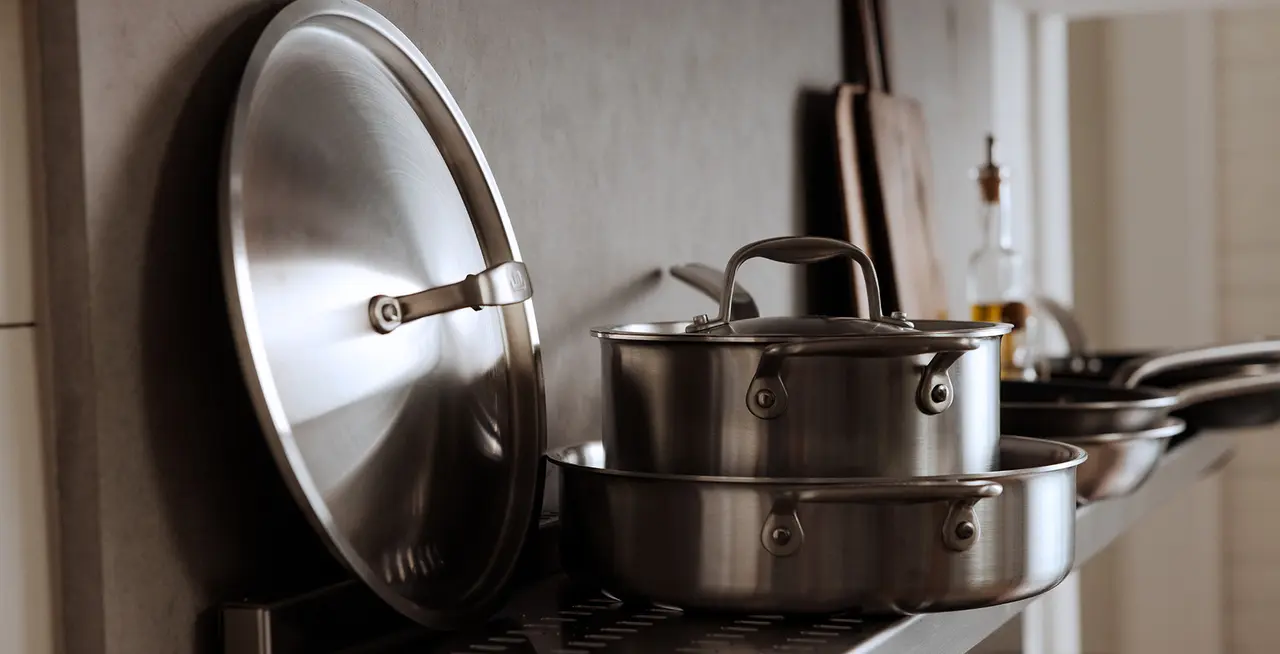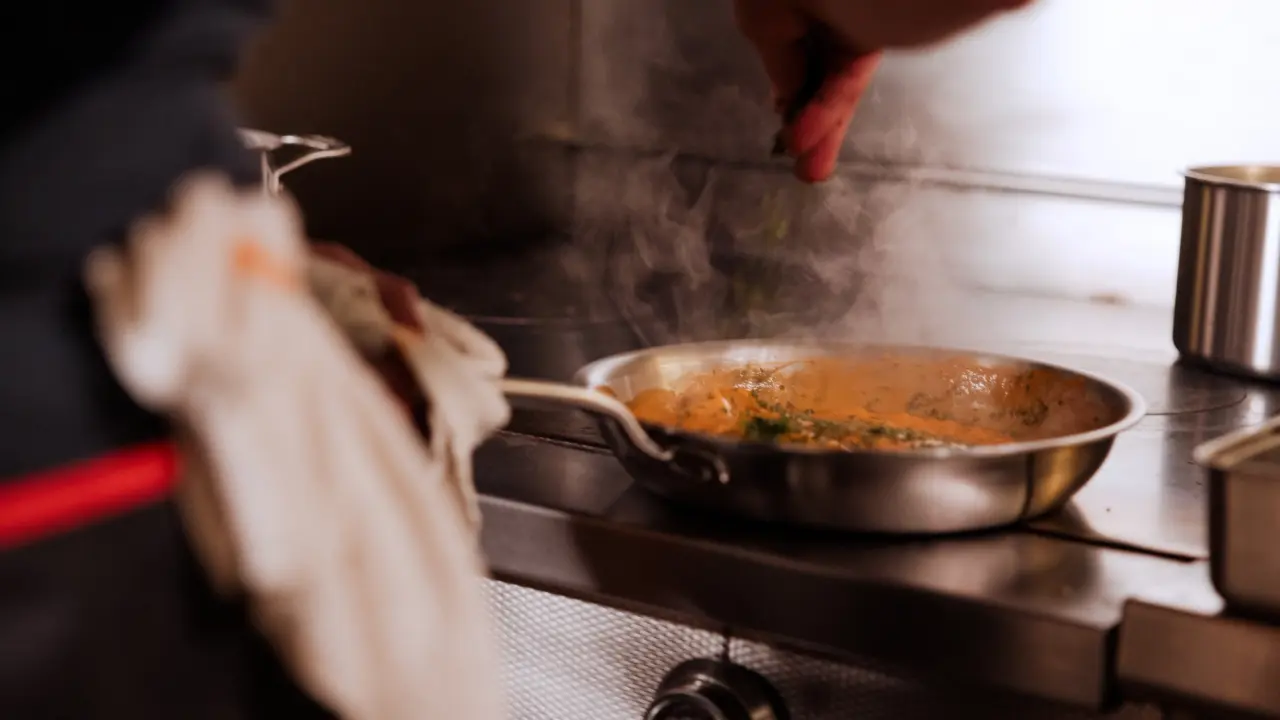Home cooks today are increasingly health conscious when it comes to what they’re cooking and eating. And as research on the subject increases, it’s becoming apparent that the cookware we’re using is just as important as the ingredients being cooked. Unfortunately, many kinds of cookware can be potentially hazardous depending on how they’re used—especially if purchased from less reputable brands.
Fortunately, stainless steel is one of the safest options when it comes to cookware. Below, we’re explaining why home cooks love stainless steel, how it differs from other cookware options, and how it stacks up against them in terms of ease, safety, and functionality.
Understanding Stainless Steel

Stainless steel is an alloy, or a metal composed of multiple metallic elements, that contains both chromium and nickel. Chromium is a metal the human body needs, albeit in small doses. According to the USGS, “[Chromium] is what hardens and toughens steel and increases its resistance to corrosion, especially at high temperatures.”
Nickel on the other hand, is something the human body has no use for and which can cause heavy metal poisoning if ingested in large amounts. We use an 18/10 stainless steel, which has a higher nickel percentage, for the shiny and polished top surface of our pan. This is a costlier, more attractive grade of stainless steel that’s more commonly used for high-end stainless cookware and flatware (like ours).
Stainless steel refers to a combination of metals, called an alloy, which typically includes iron, chrome and nickel. Our Stainless Clad Cookware also includes aluminum, which helps with heat conduction.
What Is Stainless Clad?
Cladding is a method of metal fabrication where different metals are layered and then bonded together to form a new, single sheet of metal. “Ply” refers to how many layers go into this new sheet—you may find options ranging from 3-ply all the way to 7-ply.
Our cookware is 5-ply, utilizing 5 sheets of 4 different metals (304, 18/10 stainless steel, aluminum, aluminum alloy, and high-grade ferritic 430). We rely on a highly conductive aluminum/aluminum alloy core to transfer heat efficiently and evenly across the cooking surface, and envelop this in a cladded exterior composed of different grades of stainlesss steel.
This ensures safety, induction compatibility, attractive shine, corrosion and rust resistance, nonreactivity, and overall durability for every single piece of cookware. To find safe stainless steel, qualities and materials like these generally indicate safety.
Is Stainless Steel Cookware Safe?

In the simplest terms, yes—stainless steel cookware is 100% safe to cook with. It’s one of the more versatile, adaptable, and low low-maintenance options available to home cooks. Safety-wise, it ranks especially high in our books for its nonreactivity, its lightweight maneuverability, and its impressive heat regulation capabilities, all of which help minimize risk for dangerous chemical leaching, physical injury, and accidental flare-ups.
While stainless steel is generally safe to cook with, not all stainless steel is constructed the same. For example, the premium-grade stainless steel we use for our Stainless Clad Cookware has a high bond strength, meaning that chemical leaching is unlikely. In other words, you can safely use our cookware without fretting over any of the construction materials leaching unsavory chemicals into your finished dish.
On the other hand, cheaper, poorly constructed stainless steel with weaker alloys may allow for a small amount of nickel to escape into the food you’re preparing—and then into your body.
Maintenance Tips for Stainless Steel
To keep your stainless in top-of-the-line, safe shape, there are a couple usage and maintenance tips to follow.
Mind Any Scratches
Stainless steel is revered for its durability, whether preparing meals for an entire restaurant night after night or used every once in a blue moon for shallow frying. While it won't scratch as easily as coated cookware (like non stick or ceramic), it's still possible to get a few scratches here and there with wear.
Superficial scratches from forks or tongs are nothing to be concerned about—they happen to the best of us. Deeper gouges, however, should be treated with caution, as bacteria can grow in these scratches and transfer to your food. For this reason, we recommend using a light touch when handling stainless steel utensils and other instruments in your cookware.
Store Correctly
Stainless steel is a workhorse for a reason—it's durable and takes a lot for it to rust. That said, you shouldn't just leave it exposed to the elements and hope for the best. Storing cookware correctly, whether hanging on a rack or stacked in a drawer with Pan Protectors in between, can do a lot to preserve the longevity of your cookware.
Ready to Shop?
Our line of Stainless Clad Cookware is constructed from high-quality materials, chosen with the consumer in mind. They are a safe alternative to other, lesser quality pots and pans and with proper care and maintenance, they should last for years with no adverse health consequences.





























